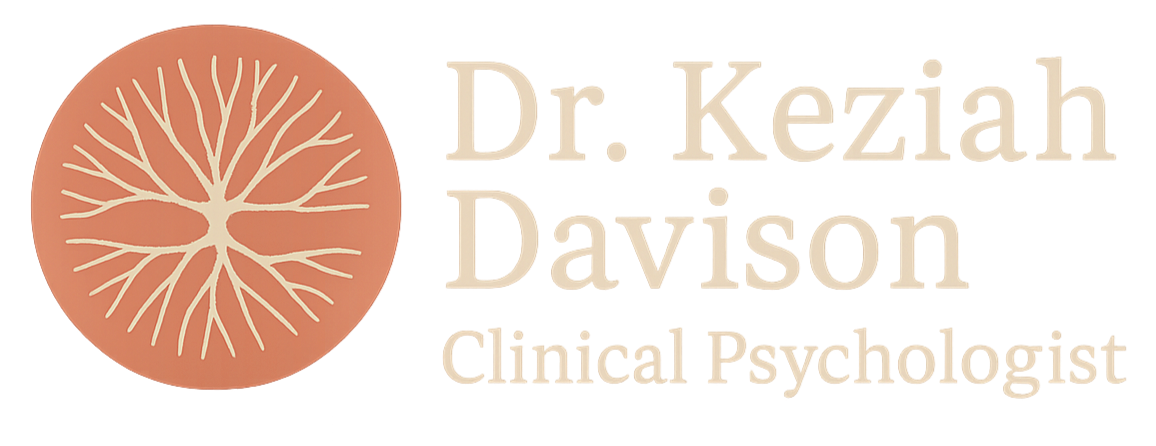Still Held: The Space Between Therapy Sessions & Why it Shapes the Work
Therapy is much more than a fifty-minute slot on a calendar - it doesn’t end when the chair is empty. Behind the scenes, we’re actively holding you in mind with care and intentionality, far more than you might expect. Likewise, the process continues for you as a client in powerful ways that are central to change and growth.
The Container and Contained
The psychoanalyst Wilfred Bion spoke of the relationship between the container and the contained — the idea that the therapist holds and processes raw emotional material on the client’s behalf. This happens both explicitly through what’s spoken in session, and implicitly in the therapist’s internal world as we reflect and feel our way through what’s been shared.
You might find yourself mentally ‘talking’ to your therapist in the days between sessions. These imagined conversations aren’t insignificant - they’re part of the work. They reveal how you experience the relationship, how it lives inside your mind. What arises from these chats - such as anxieties, self-reflections, even dreams - offers rich material for reflective discussion during your next session.
How Do You Feel When You Leave The Room?
One of the quiet questions that therapy asks is:
Does the feeling of being understood persist without immediate feedback? Do the feelings of safety you experienced whilst in the chair persist in the wild?
If the answer is '“Yes”, it suggests that something foundational has taken root - the therapeutic relationship has moved from an external experience to an internal resource. You may find, at this stage, that you feel able to deepen your therapeutic work or take more emotional risks. This is because therapy has started to provide a safe base from which to explore with confidence, much like a secure early attachment with our caregivers. When the echo of being understood lingers between sessions, therapy isn’t over - it’s working.
What about the Therapist?
Clients often wonder: Do therapists just switch off after a session?
The answer is no — most of us are actively engaged between sessions too, in ways that support the work and honour the relationship.
Here’s a glimpse behind the curtain:
1. Reflecting on the Session
We mentally revisit what came up — not to analyse you, but to better understand the emotional threads, patterns, or emerging themes. We might think about what felt important or what was left unsaid. Sometimes we naturally question whether we followed the most helpful thread or could have responded in a more attuned way - many therapists believe that this humility and self-reflection is critical for meaningful therapeutic work.
2. Planning or Preparing
Sometimes we’ll consider what might be helpful to explore next: a question to bring, a metaphor, a way of pacing that feels safer. If we use an integrative approach, we might think about when to gently introduce a new strategy or tool.
3. Note-Taking and Record-Keeping
Depending on our approach and setting, many of us write clinical notes — not a detailed diary of everything said, but key themes, emotional shifts, and clinical impressions. This helps with continuity, clarity, and ethical accountability.
4. Supervision & Continued Professional Development
We may bring aspects of your sessions to supervision with a qualified, experienced supervisor (always anonymously and respectfully). This isn’t usually a sign of concern, it’s a core part of ethical practice, and helps us stay reflective, supported, and curious about what’s unfolding. We also spend time reading updates in the field, gaining resources and attending further training to keep our therapeutic skills sharp.
5. Admin and ‘Holding the Frame’
We might be responding to your messages, reviewing your appointment time, or preparing for upcoming breaks. Even things like invoicing and booking are part of the structure that allows the therapeutic container to feel solid.
6. Filling our Own Cup - Rest and Self-Regulation
Therapists are human. We decompress between sessions, and how we do this is unique to each of us. For me, it involves plenty of time spent outdoors. This allows us to return present, receptive, and emotionally available to your sessions.
So no — therapy doesn’t end when the session does.
There’s often quiet processing that continues in the space between. You might find yourself circling back to something we discussed, noticing a dream or a shift in how you relate to yourself or others. These are not side effects, but part of the process.
The space between sessions can become a place of slow integration, subtle realisation, and emotional movement. Not everything needs to be resolved in the room. Often, what unfolds in between gives us important ground to return to and build on when we meet again.
References:
Donald Winnicott - Object Relations Theory
Wilfred Bion - Group Theory
Heinz Kohut- Self Psychology
Hans Loewald and Arnold Modell - Relational Theories
Sean Groarke
Russell Meares
